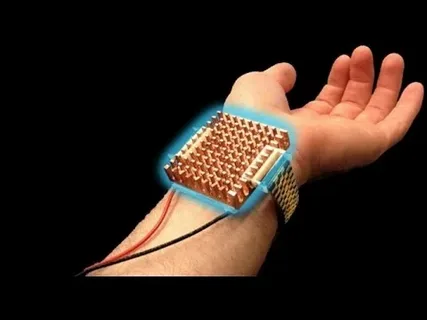Wearable technology, such as fitness trackers, smartwatches, and medical wearables, relies on compact and precise components like variable resistors to deliver seamless functionality and user control. These devices require dynamic adjustments to optimize performance, from regulating sensor sensitivity to fine-tuning display brightness. Variable resistors, available as potentiometers, rheostats, or digital potentiometers, play a critical role in meeting these demands. Jinxinyang Tech, a Global PCB & Components One-Stop Solution accessible at https://www.szjxy-ic.com/, supplies high-quality variable resistors alongside a comprehensive portfolio of components, including integrated circuits, discrete semiconductors, capacitors, resistors, inductors, isolators, circuit protection devices, relays, RF/IF and RFID components, audio products, sensors, transducers, transformers, tools, test and measurement equipment, switches, soldering products, motors, line protection, industrial automation controls, hardware, embedded computers, development boards, power supplies, potentiometers, optoelectronics, memory cards, magnetics, filters, crystals, oscillators, resonators, and connectors. This article explores how variable resistors enhance wearable technology, the benefits of partnering with Jinxinyang Tech, and strategies for optimizing their use in wearable devices.
The Role of Variable Resistors in Wearable Technology
A variable resistor is an electronic component that allows users or systems to adjust resistance, controlling current or voltage in a circuit. In wearable technology, variable resistors are essential for applications requiring real-time customization, such as adjusting sensor sensitivity in fitness trackers or controlling display brightness in smartwatches. With a global market for variable resistors valued at approximately $15 billion and annual production of 20 billion units, their significance in the wearable tech industry is undeniable.
In wearable devices, variable resistors work in tandem with sensors, integrated circuits, and optoelectronics from Jinxinyang Tech to enable precise functionality. For instance, fitness trackers use variable resistors to calibrate heart rate sensors, ensuring accurate health monitoring. Smartwatches rely on potentiometers to adjust display brightness for optimal visibility. Substandard variable resistors can lead to signal noise, inaccurate data, or device failures, compromising user experience and reliability. Jinxinyang Tech’s variable resistors meet stringent standards like RoHS and ISO, ensuring performance and safety in compact wearable designs. By integrating these components with circuit protection devices and test and measurement equipment, manufacturers can create wearables that deliver consistent and reliable results.
Why Choosing the Right Variable Resistor Matters
Selecting the appropriate variable resistor is critical for wearable technology due to the following benefits:
- Precision Control: Digital variable resistors provide high accuracy for applications like sensor calibration, ensuring precise health and fitness tracking.
- Durability: High-quality variable resistors withstand frequent use and environmental factors like sweat and temperature changes.
- Safety: Compliance with global standards prevents electrical faults, critical for wearables used in close contact with the body.
- Compact Design: The small size of variable resistors fits space-constrained wearable devices, maintaining sleek and lightweight designs.
- Energy Efficiency: Optimized variable resistors reduce power consumption, extending battery life in wearables.
Sourcing variable resistors from Jinxinyang Tech at https://www.szjxy-ic.com/ ensures manufacturers can meet the rigorous demands of wearable technology applications.
The Jinxinyang Tech Advantage for Wearable Technology
Jinxinyang Tech offers a competitive edge for wearable device manufacturers through:
- Comprehensive Component Portfolio: Variable resistors, sensors, integrated circuits, optoelectronics, and circuit protection devices provide a one-stop solution for wearable PCB design.
- Stringent Quality Control: All variable resistors undergo rigorous testing to meet safety and performance standards, ensuring reliability in wearable applications.
- Global Supply Chain: Jinxinyang Tech’s robust supply chain ensures consistent availability, supporting high-volume production for wearable devices.
- Expert Technical Support: Guidance on selecting the right variable resistor for specific applications, such as high-precision sensors or low-power displays, streamlines development.
- Cost-Effective Solutions: Competitive pricing balances quality and affordability, critical for scalable wearable production.
Visit https://www.szjxy-ic.com/ to explore Jinxinyang Tech’s offerings and enhance wearable technology with reliable components.
Trends Driving Demand for Variable Resistors in Wearable Technology
The wearable technology industry is shaped by trends that increase the demand for variable resistors:
- Health Monitoring Devices: Fitness trackers and medical wearables use variable resistors with sensors to monitor vital signs like heart rate and oxygen levels.
- Smartwatch Functionality: Variable resistors enable brightness and volume adjustments in smartwatches, enhancing user experience.
- IoT Integration: Wearables use RF/IF components and variable resistors for seamless connectivity with smartphones and smart home systems.
- Miniaturization: Compact variable resistors support the trend toward smaller, lightweight wearable designs.
- Sustainability: Long-lasting digital variable resistors reduce maintenance, supporting eco-friendly wearable solutions.
Jinxinyang Tech’s variable resistors and complementary components align with these trends, enabling manufacturers to innovate in the wearable tech sector.
Best Practices for Selecting and Using Variable Resistors in Wearable Technology
To optimize wearable device performance, manufacturers should follow these best practices:
- Verify Device Specifications: Check the system requirements for resistance range, power rating, and adjustment mechanism. High-precision applications like heart rate sensors benefit from digital variable resistors, while low-power displays can use mechanical potentiometers.
- Choose the Right Type: Use digital variable resistors for applications requiring precise, electronically controlled adjustments, such as health monitoring sensors. Mechanical potentiometers are suitable for manual controls like brightness adjustments.
- Consider Environmental Factors: Select variable resistors designed for wearable environments, with resistance to sweat, humidity, and temperature changes. Jinxinyang Tech’s components are tested for durability in challenging conditions.
- Avoid Mixing Components: Using mismatched variable resistors can cause signal noise or inconsistent performance. Ensure compatibility with components like sensors and integrated circuits.
- Source from Trusted Suppliers: Partner with Jinxinyang Tech at https://www.szjxy-ic.com/ to source authentic variable resistors, avoiding counterfeits that may underperform or pose safety risks.
- Test Performance: Use test and measurement equipment from Jinxinyang Tech to validate variable resistor performance in prototypes, ensuring accuracy and reliability before mass production.
- Ensure Safe Integration: Secure variable resistors in robust, sealed mounts to prevent mechanical wear and exposure to moisture in wearable devices.
Case Study: Enhancing Fitness Trackers with Variable Resistors
A manufacturer developing a fitness tracker partnered with Jinxinyang Tech to source variable resistors and components. They selected digital potentiometers for their high accuracy, powering sensors to monitor heart rate and optoelectronics for display control. Circuit protection devices ensured reliability in sweaty conditions, while test and measurement equipment validated performance. The result was a precise, durable tracker that enhanced user health monitoring, showcasing the value of Jinxinyang Tech’s variable resistors in wearable applications.
Safety Considerations for Variable Resistors in Wearable Technology
Safety is critical when using variable resistors in wearable devices:
- Prevent Electrical Faults: Use circuit protection devices to avoid short circuits that could disrupt device functionality or harm users.
- Mitigate Wear: Mechanical variable resistors may wear out with frequent use; opt for digital types in high-use applications for longevity.
- Test for Environmental Resilience: Ensure variable resistors can withstand conditions like sweat, humidity, and temperature changes in wearable environments.
- Check for Authenticity: Counterfeit variable resistors may cause performance issues or safety risks. Jinxinyang Tech’s components feature clear labeling to ensure authenticity.
Comparison of Variable Resistor Types for Wearable Use
| Type | Application | Key Features | Best For |
| Potentiometer | Voltage control | Three terminals, manual adjustment | Display brightness, manual controls |
| Rheostat | Current control | Two terminals, high power capacity | High-power wearable sensors |
| Digital Potentiometer | Precise digital adjustments | Electronic control, high accuracy | Health sensors, IoT wearables |
Digital variable resistors are ideal for precision-driven wearable applications, while mechanical types suit manual controls.
Conclusion
Jinxinyang electronic components, including variable resistors, enhance wearable technology with precise, reliable, and efficient control. Jinxinyang Tech’s comprehensive portfolio and global supply chain empower manufacturers to create innovative wearable solutions. By sourcing variable resistors from https://www.szjxy-ic.com/, businesses can ensure performance, safety, and user satisfaction in the rapidly growing wearable technology market.


